Tooms offers us the show’s first returning monster, not counting the recurring alien menace that has appeared in episodes like Deep Throat or Fallen Angel or E.B.E. In fact, it arguably offers us two recurring monsters, with Eugene Victor Tooms putting in his second appearance, but also featuring the second official (but third possible) appearance of the Cigarette-Smoking Man.
Appropriately enough, Tooms doesn’t just bring back the eponymous serial killer, it begins to tie various loose ends together, and to fashion a sense of continuity and development from the various character moments and implications of the first season, suggesting that forces are moving in the background, behind the scenes of everything we’ve watched unfold.
Eugene Tooms is the first of only three stand-alone monsters to make a second appearance on the show, and arguably the only successful of those three returning guest stars. Tooms is a highlight of the first season of The X-Files, especially of the late first season of The X-Files, where it often seemed that Carter and his writers were racing frantically against a deadline to get the script finished and to start filming.
While it’s not anchored in the show’s on-going conspiracy plot arc, it does mark something of a turning point. The last couple of episodes have been delving into the history of Mulder’s X-Files, with Shapes even giving us something of an origin story for the department and Darkness Falls referencing a case from decades ago. Tooms expands that engagement with the department’s own history, bringing back another case file, but one that the audience will recognise.
In a way, it prefigures the whole conspiracy plot arc. The first season has a handful of episodes dedicated to government cover-ups of alien encounters – episodes like Fallen Angel or E.B.E. – but it hasn’t really fashioned them into a single cohesive story. These aren’t separate chapters in the tale of Mulder’s quest to uncover some vast conspiracy buried in the American government. These are just things that happened, with no over-lapping elements beyond the presence of Deep Throat.
The Erlenmeyer Flask would make it clear that show was fashioning a long-term continuing narrative from that government conspiracy, but Tooms is the first episode to really suggest that there is an on-going narrative, that elements carry over, that The X-Files is going to be more than just a collection of done-in-one stories that sometimes share characters and thematic elements.
It’s hard to imagine that The X-Files ever seemed like it might be a purely episode television show. The vast and over-complicated mythology has become so much a part of the show’s identity that it’s considered a quintessential attribute to those who have barely seen an episode. However, it’s worth noting that, up to this point, the show has had precisely one recurring guest star.
The first season doesn’t feature any “official” two-part episodes, unlike each of the following eight seasons. The closest we get is The Pilot and Deep Throat, which form something of a feature-length first episode. Although the first season introduces a number of character who would appear later in the show’s run – Max Fenig in Fallen Angel, the Lone Gunmen in E.B.E., Walter Skinner here – none of them appear twice in this twenty-four episode block. Up until Tooms, Deep Throat and Blevins are the only major characters to have appeared more than once, even if Blevins hasn’t appeared for over half a season.
Okay. Maybe there have been two recurring guest characters, if you’re willing to be generous and argue that William B. Davis was playing the Cigarette-Smoking Man in Young at Heart. However, even that seems relatively non-committal. According to Where There’s Smoke…, Davis had been cast in that tiny role just in case the show wanted to dabble in continuity:
It wasn’t until February that I heard from them again and then it was for a different role altogether – well, maybe it was a different role. The character in the episode Young at Heart was known only as CIA Agent, but apparently they wanted me to play the role in case they should decide he was the same person as the smoking guy in the pilot – though this character didn’t smoke, in the episode at least.
That would seem to imply that Carter and his team hadn’t quite committed to serialised arc-based storytelling until well past the half-way point in the season. They were open to the possibility, but but not willing to completely engage with it.
Even the use of the show’s single recurring guest star, Deep Throat, betrayed the sense that there was no real “big plan” for this conspiracy that Mulder was unearthing. According to The X-Files Declassified, Hardin did not expect Deep Throat to be a recurring role. Certainly, his inclusion in early episodes like Ghost in the Machine feels rather clumsy, as if the show is trying to incorporate a character popular with the fans rather than to adhere to any carefully managed design.
In fact, for most of the first season, Deep Throat feels more like a convenient plot device than a supporting character with his own arc or motivations. In episodes like Eve and Young at Heart, Deep Throat is a convenient way for the show to give Mulder and Scully information that they probably shouldn’t have. It isn’t until we reach E.B.E. that Deep Throat develops into a character with his own back story and motivations. (Probably not coincidentally, it’s the character’s last appearance before The Erlenmeyer Flask.)
Some of that uncertainty carries over to the debut of Walter Skinner here. Actor Mitch Pileggi has suggested that Skinner wasn’t originally intended as a recurring character, but only developed into a recurring cast member over the summer hiatus:
I had gone in and read for Chris several times before for other episodes, different characters. And at the time I was shaving my head. And I didn’t remember this at all, cause I had a talk with him, when was it, I think it was the wrap party or something like that, I had reminded him that I had come in to read several times before for him, and he said, yeah, but your head was shaved. And I said, yeah, it was, wasn’t it? So that’s why I didn’t get it. So I came in for this one and my hair had grown back, or what hair I have had grown back, and you know, it just clicked. I went in and read for, I think Chris was there, and Jim Wong was there, and it was…I guess I went in with the right attitude for Skinner, you know? He let me do it. And this was just actually for one episode the first season that I guess started off … that was the Tooms episode, the second one, yeah.
So I did that one episode, and I figured, well, that was fun, and that’s it. (laughs) And I didn’t hear anything from them again until the end of the season, and then they, I guess, I think it was during the hiatus they called and asked if I would come back and do the eight-episode arc at the beginning of the season, and kind of do a recurring bit.
Why do you think that happened? Was it, do you think it’s because your character is popular, or was it…
I don’t know. I don’t know what kind of response they got to the character initially. You know, I know a lot of it had to do because Gillian was pregnant, and they needed to, I think, take the show in a different direction while she was dealing with that. So I think there was a lot of government intrigue stuff going on at that point. So that’s why. I think it was to compensate for her situation. And then it kind of just, the character just started kind of clicking and working, and they were happy with what was going on, so they said, you know, we want you to keep coming back, we’ll call you when we want you. And I said, well, I’m here.
Indeed, Skinner would become one of the show’s most consistent and reliable supporting players. He signed a six-year contract at the end of the show’s second season, and even worked his way into the main credits towards the end of the show’s run.
It’s worth noting that Pileggi does great work. Pileggi might be the show’s strongest recurring cast member, and he brings a lot to the table. In a way, Skinner seems a more relatable character than Scully, with her impressive qualifications and encyclopedic knowledge of any given subject. Skinner doesn’t exist to counter Mulder with nerdy fringe pseudo-science. He’s just a regular guy who doesn’t know that much about either space ships or swamp gas. He just knows that Mulder and Scully investigate freaky stuff.
Skinner often feels like the only sane man, keeping in mind that Scully’s theories are often as improbably and as out there as Mulder’s ideas. Scully just grounds her hypotheses in pseudo-science rather than the paranormal. Skinner, on the other hand, clearly just finds all this stuff a little weird. “Do you believe them?” he asks the Cigarette-Smoking Man, quite candidly, reacting pretty much the same way that the average member of the audience would if handed that FBI report.
To be fair, Walter Skinner is hardly the most complex or developed of characters here. He’s written as little more than a human obstacle to Mulder and Scully. He exists to put pressure on the duo, and the script is quite happy to have Skinner apply that pressure any number of ways. Trying to get under Mulder’s skin, for example, Skinner is quick to try the carrot and the stick approach.
“Now, most of us, including the director, feel that your talents are wasted on the X-Files but we respect that you’re deeply invested in those areas,” he informs Mulder at one point in the conversation. He appears reasonable and even sincerely concerned about his subordinate. When that approach fails to gain the necessary traction, he falls back on thinly-veiled threats. “This was close. Any closer and a thousand friends at the capitol won’t be able to help you.”
Pileggi still manages to dig deep into the material he is given. He makes Skinner seem like a more complex character than the show’s earlier FBI overseer characters. A lot of this is done subtly. Pileggi doesn’t play Skinner as slimy or manipulative – he doesn’t look like the kind of man who enjoys playing politics. It’s easy enough to accept Skinner’s gruff no-nonsense demeanor at face value, and to assume that he’s just a guy trying to do his job, rather than acting out of malice.
As such, the personal exchanges with Mulder – offering Mulder time off, referencing his sister, pointing out that Mulder’s actions have consequences that impact other members of staff – all seem like legitimate concerns. Based on what we’ve seen over the past season, it’s easy to imagine that Mulder is a nightmare to manage. Overseeing Mulder’s work must be enough to give people ulcers. Imagine the travel expenses, the perpetual threat of lawsuits, the bruised egos, the insane theories.
Scully finds it hard enough to support him in the trenches. Covering Mulder from on high must be a full-time job, and it’s hardly the job that Assistant Director Walter Skinner has been hired to do. Pileggi plays Skinner as a man who doesn’t seem to be hiding too many dark secrets. He’s just a guy trying to do a job, who probably comes into the office to deal with four or five angry phone calls about Mulder every morning.
Pileggi also hints that the relationship between Skinner and the Cigarette-Smoking Man isn’t particularly close or well-defined. The FBI agents in The Pilot were so comfortable with the Cigarette-Smoking Man that they barely acknowledged him. He had some absolute and unspoken right to be in the room, and they unquestioningly respected that. His presence in The Pilot was so unnerving because Scully was the only one who seemed awkward about it.
In contrast, Pileggi makes it clear that Skinner is not comfortable with the Cigarette-Smoking Man being present. Using some wonderfully subtle non-verbal cues – an occasional, almost subconscious sideways glance when chastising Mulder and Scully, for example – Pileggi suggests that Skinner isn’t used to this man sitting in on his work. Despite his candid question about the Tooms case towards the end of the episode, it seems like Skinner knows as much about the Cigarette-Smoking Man as Mulder and Scully do.
Tooms is where the plot threads start coming together, as the episode makes it clear that even the individual cases in The X-Files do not exist in a vacuum. Not all monsters can be forgotten about once the episode ends. Skinner and the Cigarette-Smoking Man aren’t chewing Mulder out because he got too close to a government conspiracy. They are always watching, always waiting, always expecting Mulder to slip up or make a mistake.
In many ways, Tooms serves as a link between the suggestion in Fallen Angel that the X-Files can be shut down, and the reality of that situation in The Erlenmeyer Flask, informing viewers that the people watching Mulder don’t go away simply because the case in question doesn’t involve them. The episode ends with an ominous suggestion from Mulder, one far more pointed than the show’s usual “… or is it?” ambiguity concerning the case-of-the-week. “A change for us,” he warns Scully and the viewers. “It’s coming.”
Tooms confirms, undeniably, that there is a big picture. It feels almost poetic that the show does this in an episode featuring the return of the series’ very first “monster-of-the-week”, given the reputation that “monster-of-the-week” shows have for being relatively independent or stand-alone. It’s a lovely bit of meta-text that enriches the episode, not unlike the decision to air Morgan and Wong’s Never Again the week following Leonard Betts, despite the fact that it had been finished earlier.
Bringing back Tooms is an interesting choice, but apparently it came down to a number of factors. Tooms was popular with fans, and The X-Files was one of the first shows to directly engage with on-line fandom. More than that, though, Morgan and Wong were also quite disappointed with how Squeeze turned out, and so wanted to revisit the villain:
“We liked him a lot,” Wong notes of the character, who was voted Best Villain by X-Files fans on the American OnLine computer network. He and Morgan felt another Tooms episode would be their chance to do right by him. “The fans liked him and he was scary and we decided to finish him off.” Wong says, “That was the show that David Nutter directed. We thought, ‘What a perfect combination.’ We get Tooms -we like the character and the actor, and we had a great experience with David.”
While I quite enjoyed Squeeze, I’ll concede that Nutter – despite being saddled with some truly dire scripts like Shapes or Lazarus – is one of the strongest recurring directors on the first season of The X-Files. Tooms drips with atmosphere, thanks to Nutter’s stylish direction.
Apparently, like E.B.E., the writers began with the episode’s ending and worked backwards from there:
“Tooms’ was just about trying to get it right,” says Morgan, who wasn’t pleased with how “Squeeze” turned out. “That [idea] came about when I was Christmas shopping at the Thousand Oaks Mall and these guys were working the elevator. The base of the escalator is a metal plate and you lift it up and these guys were inside of it. And I thought, “That would be great if somebody lived down there.”
Which is a great image, but only one of many wonderful and effective sequences from Tooms.
The final confrontation under the escalator is possibly the best climax of the first season, but Nutter and Wong and Morgan ensure that the episode keeps ticking over with tension. The scenes where Tooms stalks his prey are particularly effective – especially the creepy “he’s coming through your toilet” bit. (Apparently, the “lock the toilet” gizmo is a real thing. I never suspected.)
That said, there are one or two elements that feel a little trite, the result of writing a sequel to a story we’ve already seen this season. It seems a bit convenient, for example, that Briggs is suddenly able to remember a vital clue that will help put Tooms away. This clue might have come in handy during Squeeze, and the fact that he only remembers it now is a little conspicuous. The script doesn’t even try to excuse the plot point.
There’s no sense that this vague possibility always existed at the periphery of Briggs’ memories of the case, nor is there a hint that he had to strain to remember it. In fact, he just blurts this vital avenue of investigation out, with absolute certainty. “I’m positive that Tooms hid this one victim because there was something about the body that could prove he was the killer,” he tells Scully, glossing over the fact that he never mentioned it before, or that Mulder never thought it odd that one victim wasn’t found.
Similarly, the logical contortions to get Tooms released don’t necessarily hold up. He was captured in the house of an FBI agent. Even if there’s no evidence to hold him on the other charges, that should have seen him locked away for a very long time. The X-Files was never really too convincing as a police procedural – for one thing, Mulder was able to hang on to his job after incidents like Paper Hearts – but releasing Tooms into the larger population with minimal supervision feels like a particularly blatant narrative shortcut.
Doctor Monte’s interest in Tooms isn’t developed enough to feel like anything more than an excuse to get Tooms back on the street, with Monte never feeling like anything more than the “dumb psychiatrist” stereotype. Why is he so interested in Tooms? Tooms is manipulating him, but we never see how much? Does Monte like Tooms? Is he writing a journal article? Is he attracted to the headlines surrounding the case? What’s the angle?
Still, Tooms works a lot better as atmospheric character study than as a compelling narrative in its own right. Tooms himself is an amazing creation, both in terms of writing and performance. Doug Hutchinson does a wonderful job underplaying the mutant killer. Watching Tooms, the audience is invited to wonder about the character. Is he driven solely by biological imperatives? Obviously, given his framing of Mulder, there’s a clear intelligence at work there, but just how smart is Tooms? How direct was his manipulation of Monte, for example?
There are little hints here and there that Tooms is more calculating than he might appear. He doesn’t strike out of mere opportunity – as Mulder points out, he’s too smart to murder his caretakers. He flashes Mulder what looks like a sadistic grin after he goews free. And yet, despite that, his killing of Monte at the show’s climax seems driven by animal instinct – a crime of pure opportunity that could probably be traced back to him just as easily as the murder of the two caretakers.
It would be easy for Hutchinson to lean heavily one way or the other, but he cleverly portrays Tooms with a distinct “otherness” and detachment. He feels genuinely alien, inviting the audience to wonder how much of what they read into the character is an attempt to fill in the gaps on something that is so radically and obviously inhuman that it probably defies any standard of classification that we have. Tooms was the first terrestrial monster to appear on The X-Files, and there’s a very convincing argument to be made that he remains the best.
Morgan and Wong also do great work with Mulder and Scully here. In keeping with Ice, their portrayal of Mulder seems to be relatively cynical. In Ice, Mulder’s paranoia and self-righteousness nearly brought the group to blows. Here, Mulder’s stubborn refusal to compromise leads to the release of Victor Eugene Tooms. It’s heavily implied that Mulder’s testimony was a deciding factor in the decision to release Tooms, and Mulder is self-aware enough to realise that the hearing was never going to indulge the “Tooms is a mutant” school of thought.
And yet Mulder invests in it whole-heartedly. Even as the prosecuter seems embarrassed and Scully visibly winces, Mulder relishes the opportunity to document his surreal findings in public. He even prepares a handy slide show presentation to explain to those present just how right he is about the nature of Eugene Tooms. Mulder is well aware of how well his presentation will go down. Afterwards, he doesn’t even seem that disappointed. He jokes, “You think they would have taken me more seriously if I wore the grey suit?” It’s as if Mulder’s craziness and isolation is a self-fulfilling prophecy – something he almost expects.
“Mulder, your testimony,” Scully begins, “you sounded so…” Mulder cuts across her, “I don’t care how it sounded as long as it was the truth.” It’s a noble sentiment. However, Wong and Morgan invite us to question it. Mulder claims to be concerned about right and wrong, and is willing to bend the rules to help stop Tooms from killing again. He engages in an illegal around-the-clock surveillance operation against Tooms, despite being warned away from the case, and not being given the necessary support – knowing that it could be used to shut down the X-Files.
Mulder does care about public safety and stopping Victor Tooms. As his testimony gets out of hand, he pleads with court, “I must ask that you place the safety of the people first and foremost…” Mulder is more than willing to break the rules to help keep the people safe. And yet, knowing that his testimony would likely force the hand of the hearing into releasing Tooms, Mulder isn’t willing to compromise his evidence – even selectively, passively or through mere omission – in order to keep Tooms locked up.
While there are obvious moral and ethical issues at play here – in that Mulder should obviously not be “covering up” crimes Tooms committed, even if they occurred decades ago – there’s also precedent for a similar approach. Federal and local prosecutors will often only pursue cases and charges based on the likelihood of conviction. In some cases, the prosecutor may choose to file a lesser charge with a higher chance of conviction, for example – thus rendering evidence of other charges moot.
Since the state seemed unlikely to be seeking to hold Eugene Tooms for crimes committed almost a century ago, it could be argued that those findings were reasonably excluded from the inquiry’s terms of reference. Even though the episode glossed over it, one imagines that the board of inquiry would have been more likely to hold Tooms for attacking a federal agent in her home than for accusations leveled by that agent’s partner that he’s an ancient cannibalistic mutant.
There’s an argument to be made that Mulder’s lack of compromise isn’t really about truth either. After all, despite his religious adherence to the concept of “the truth”, he and Scully lie to Skinner about where he was when Tooms was attacked. It’s a pragmatic lie, and Mulder is only passively complicit, but it’s a compromise for the greater good. Instead, there’s a lot here to suggest that Mulder cares most about being right, about having his world view validated.
There’s something almost tragic about this. Despite his reputation as “Spooky” Mulder and his frequent claims that he doesn’t mind being treated as something of a fringe nutcase, there’s a sense that Mulder really just wants to be able to hold his head up high, to force those around him to admit that isn’t crazy or creepy or “out there”, and that his beliefs are just as valid as anybody else’s. It makes Mulder look rather lonely, in a perverse sort of way – too stubborn to conform in order to fit in, but still seeking some small measure of acceptance.
Indeed, Mulder still seems quite paranoid and isolated. After a year working with Scully, and after all her assistance and trust, Morgan and Wong hint that Mulder still has some measure of doubt about his partner. When Mulder does the usual “Mulder thing” of leaving Scully with the by-the-book grunt work on the case (autopsies, records, and here working on cold cases), he immediately seizes upon her hesitation as evidence that she’s not a “true believer.”
“Look, Scully,” he explains, “if you’re resistant because you don’t believe, I’ll respect that. But if you’re resistant because of some bureaucratic pressure, they’ve not only reeled you in. They’ve already skinned you.” It seems quite passive aggressive, even with his allowance for her own capacity to form her own judgments at the start. It’s Mulder-against-the-world, and it seems like he’s still not entirely convinced that Scully can be counted on. (Which seems a little unreasonable, but perfectly in keeping with Wong and Morgan’s version of Mulder.)
When talking about Morgan and Wong’s Beyond the Sea, I noted that the duo had done an excellent job formalising the sort of procedural storytelling model that would become so popular with the advent of CSI. More remarkably, they’d managed to work out this structure completely in the background, allowing the story to come to the fore while the gear ticked away behind-the-scenes.
That approach is obvious in Tooms. It’s a story about Mulder and Scully and the X-Files, and the pressure bearing down on those three elements. However, there’s also a fairly solid investigative arc playing out in the background. Indeed, Morgan and Wong hit on several sequences that could easily have been lifted from a CSI episode, years before the show hit the air. There’s even the same awkward “introduce the audience to forensic pseudo-science” dialogue that those shows learned to execute so very well.
“Ground-penetrating radar,” Scully explains one gizmo to Briggs. “It bounces signals off of objects or cavities.” Briggs provides espositional short hand, “Tells you where the body is?” Scully replies, “Well, it signals if something inordinate is present. An experienced operator attempts to differentiate if the signal is a body or is stone or a hole in the ground.” I feel like I learned something.
The episode also features several cool gimmicks that could easily have been incorporated into a CSI show. At one point, an FBI expert manages to date a body via copper coins, working from the mineral composition of the remains. At another point – with the proviso that the evidence won’t hold up in court, the same expert uses “computer-assisted photographic superimposition” and nineties 3D graphics to connect Tooms to the murders.
Tooms is a wonderful little episode, a powerful link between the show’s first season, and what lies ahead.
You might be interested in our other reviews of the first season of The X-Files:
- The Pilot
- Deep Throat
- Squeeze
- Conduit
- The Jersey Devil
- Shadows
- Ghost in the Machine
- Ice
- Space
- Fallen Angel
- Eve
- Fire
- Beyond the Sea
- Gender Bender
- Lazarus
- Young at Heart
- E.B.E.
- Miracle Man
- Shapes
- Darkness Falls
- Tooms
- Born Again
- Roland
- The Erlenmeyer Flask
Filed under: The X-Files | Tagged: Dana Scully, David, David Nutter, Deep Throat, Erlenmeyer Flask, Fox Mulder, List of Monster-of-the-Week characters in The X-Files, Mitch Pileggi, Morgan, Skinner, The Smoking Man, Tooms, Walter Skinner, William B. Davies, William B. Davis, X-File |















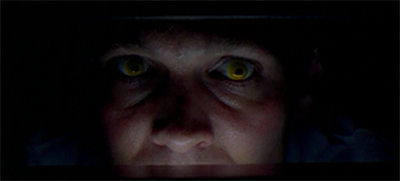
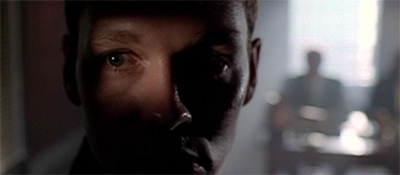
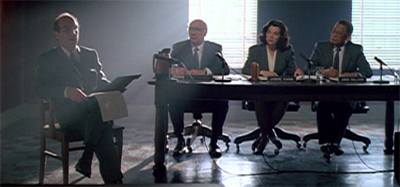


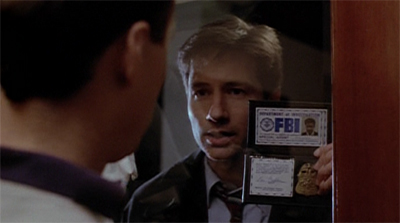
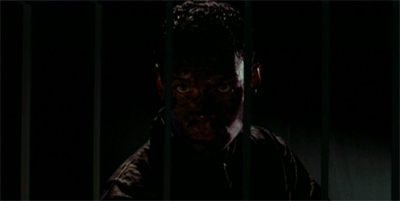


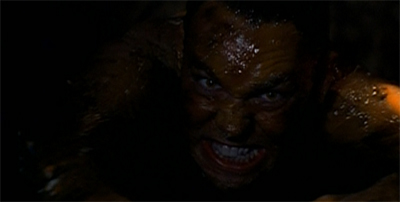
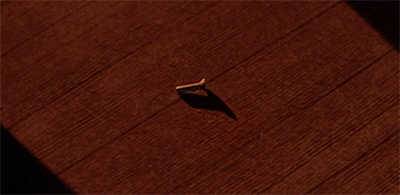

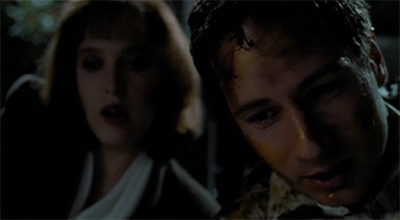
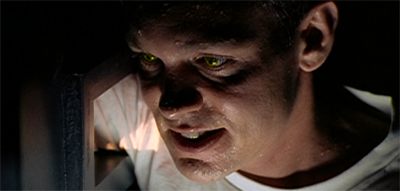


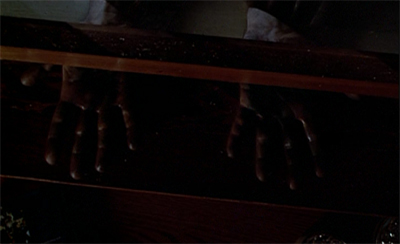
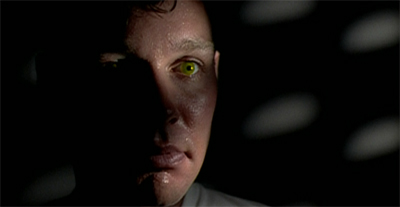
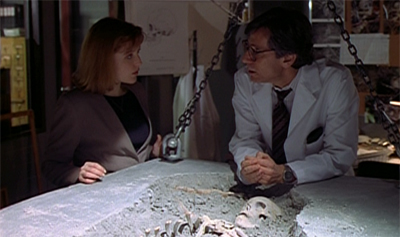

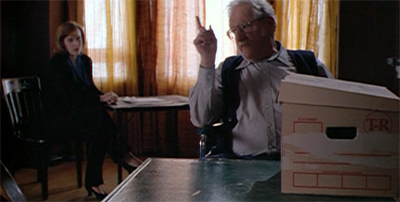
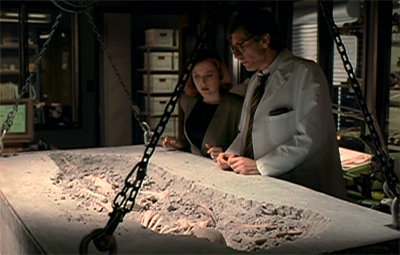





Leave a comment